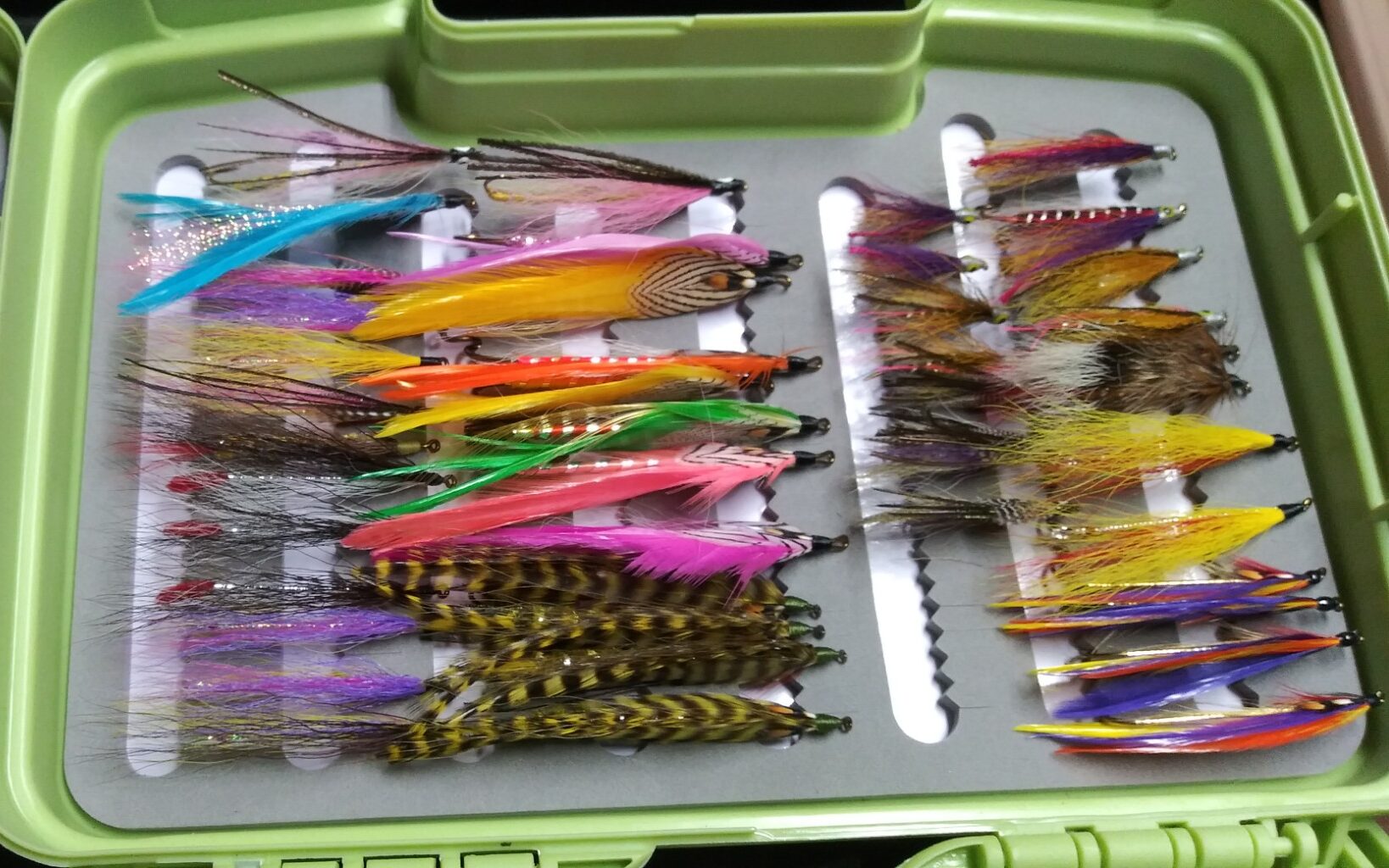
I’m not sure if it was the freight train sound of the wind or the incessant tapping of frozen flakes on my den window that made me lay down my tools and stare outside. It was about a week ago and only past noon but the snow was moving more sideways than down and it was dreary as dusk. All the schools and many local businesses were closed. I was essentially housebound so decided on a couple of hours at my fly-tying desk might stave off cabin fever.
Over long winter weeks, spring stream fishing and lake trolling are the pot of gold at the end of the rainbow that keeps us going. For many, constructing colorful creations of feathers and fur and day dreaming of outings to come or trips from the past are the winter life preservers of sanity. On this particular snow day I’d decided to tie some streamer flies; streamers are just long-shank wet flies for streams or longer, dual-hook versions for trolling lakes for larger fish.
As I perused two boxes of streamer flies checking for heavily used patterns that needed repair or empty slots that required a replacement fly to be tied, something odd caught my eye. If memory served me, most of the damaged or missing flies were colorful, attractor patterns, just like last year. Not the minnows, smelt or aquatic insect imitations; the natural food supply of gamefish that are supposed to be the most productive fake offerings by fly fisherman year after year. I keep an annual daily log book annotating each of my cast and blast outings with specifics of weather, time of day, who joined me, equipment used, fish or game caught, released, spotted or potted, The written fact verified my fly box findings, a lot more trout and salmon struck and were landed, lost during the fight or released on brightly-hued streamers that resemble no real, living food source. The odds averaged 3 to 1 with attractor patterns far outfishing bait imitator patterns.
Almost every fisherman has a favorite fly. Do you know why it’s the favorite? Because it catches fish! But that’s the old chicken and egg conundrum. Which came first? The pattern that catches the most fish is your favorite. The fly you use the most is bound to hook more fish, and any streamer that catches fish every outing is a favorite. Round and round we go.

Ice was out of the lakes but there was still snow on the ground when this beautiful brookie was caught on a spring trolling outing. Brightly colored streamers worked well that day. (Courtesy of Bill Graves)
There’s no perfect one streamer for all occasions option, if there were our fly boxes wouldn’t look like a big box of crayons exploded on dozens of hook sizes. For many years I’ve carried out my own census in the most unbiased way possible. For spring lake trolling on streamer casting I developed a dropper line system that allows me to use two streamers per rod, one bait imitator fly and one attractor pattern. As mentioned, I keep a precise log of my catch as well as my fishing companions and results are clear.
Year in and year out, the brightly hued streamers outperform the bait imitations, especially during the days and weeks when smelt runs are not occurring. In my opinion, since spring water conditions are high, cold, dingy tinted and often rife with floating debris, the vivid colors stand out better at greater distance in the water. There’s also a common theory that gamefish strike gaudy, flashy flies out of aggression, even when not anxious to feed.

Due to water conditions after ice out on local waterways, streamer flies in bright colors seem to produce more action and shown are a few proven patterns. (Courtesy of Bill Graves)
I’m happy to share my top five go-to vibrant colored streamer with you; it’s likely some of the pattern names will be unfamiliar. Check them out in a fly tying book or online, then tie them or buy them and try them, you won’t be disappointed. In no particular order consider a Red and White special, it’s a regular red and white bucktail pattern but with real jungle cock feathers for eyes. Try a blue devil, it’s far more vivid than the color suggests, and a morning glory is another beautiful and effective streamer in a single or tandem. An Ouananiche Sunset is as brilliant as it sounds and the flow and flash of a red gray ghost rounds out my quality quintet of colorful super streamers. Use a 3X size 6, 8, or 10 long shank hook for streams and small ponds and tie tandems on a size 4 front hook with a size 6 rear hook with barb facing up.
All of these streamers are fairly simple to tie, but may be a bit difficult to locate for sale. If you’re not into fly tying yet, I’m sure one of the local artisans can fill your needs. Building flies is a wonderful way to endure winter, save some money, and day dream about hooking a nice fish on your own creation as snow levels recede and daylight hours extend.







